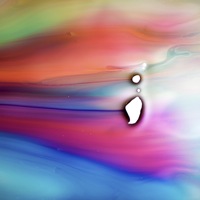Difference between revisions of "Dye"
m (Text replacement - "http://nordan.daynal.org" to "https://nordan.daynal.org") |
m (Text replacement - "http://" to "https://") |
||
| Line 3: | Line 3: | ||
==Origin== | ==Origin== | ||
[https://nordan.daynal.org/wiki/index.php?title=English#ca._600-1100.09THE_OLD_ENGLISH.2C_OR_ANGLO-SAXON_PERIOD Old English] had déag, déah ([[feminine]]), genitive déage ( < Old Germanic *daugâ-), for which a [https://nordan.daynal.org/wiki/index.php?title=English#ca._1100-1500_.09THE_MIDDLE_ENGLISH_PERIOD Middle English] dehe (= deaȝe, deȝe) is known in 13th cent. This would give later deye, dey, also (as with die v.2 and eye n.1) dye, die. The [[word]] is not known thenceforth till the 16th cent., when we find die: | [https://nordan.daynal.org/wiki/index.php?title=English#ca._600-1100.09THE_OLD_ENGLISH.2C_OR_ANGLO-SAXON_PERIOD Old English] had déag, déah ([[feminine]]), genitive déage ( < Old Germanic *daugâ-), for which a [https://nordan.daynal.org/wiki/index.php?title=English#ca._1100-1500_.09THE_MIDDLE_ENGLISH_PERIOD Middle English] dehe (= deaȝe, deȝe) is known in 13th cent. This would give later deye, dey, also (as with die v.2 and eye n.1) dye, die. The [[word]] is not known thenceforth till the 16th cent., when we find die: | ||
| − | *[ | + | *[https://en.wikipedia.org/wiki/12th_century before 12th Century] |
==Definitions== | ==Definitions== | ||
*1: [[color]] from dyeing | *1: [[color]] from dyeing | ||
*2: a soluble or insoluble coloring matte | *2: a soluble or insoluble coloring matte | ||
==Description== | ==Description== | ||
| − | A '''dye''' is a colored substance that has an affinity to the substrate to which it is being applied. The dye is generally applied in an [[Water|aqueous]] solution, and may require a [ | + | A '''dye''' is a colored substance that has an affinity to the substrate to which it is being applied. The dye is generally applied in an [[Water|aqueous]] solution, and may require a [https://en.wikipedia.org/wiki/Mordant mordant] to improve the fastness of the dye on the fiber. |
| − | Both dyes and pigments [[appear]] to be [[colored]] because they absorb some wavelengths of [[light]] more than others. In [[contrast]] with a dye, a [ | + | Both dyes and pigments [[appear]] to be [[colored]] because they absorb some wavelengths of [[light]] more than others. In [[contrast]] with a dye, a [https://en.wikipedia.org/wiki/Pigment pigment] generally is insoluble, and has no affinity for the substrate. Some dyes can be [https://en.wikipedia.org/wiki/Precipitation_(chemistry) precipitated] with an inert salt to produce a [https://en.wikipedia.org/wiki/Lake_pigment lake pigment], and based on the salt used they could be aluminum lake, calcium lake or barium lake pigments. |
| − | Dyed [ | + | Dyed [https://en.wikipedia.org/wiki/Flax flax] fibers have been found in the [https://en.wikipedia.org/wiki/Georgia_(country) Republic of Georgia] dated back in a prehistoric cave to 36,000 BP. [[Archaeological]] [[evidence]] shows that, particularly in India and Phoenicia, dyeing has been widely carried out for over 5000 years. The dyes were obtained from [[animal]], [[vegetable]] or [[mineral]] [[origin]], with no or very little processing. By far the greatest [[source]] of dyes has been from the [https://en.wikipedia.org/wiki/Plant_kingdom plant kingdom], notably roots, berries, bark, leaves and wood, but only a few have ever been used on a commercial scale.[https://en.wikipedia.org/wiki/Dye] |
[[Category: General Reference]] | [[Category: General Reference]] | ||
Latest revision as of 00:20, 13 December 2020
Origin
Old English had déag, déah (feminine), genitive déage ( < Old Germanic *daugâ-), for which a Middle English dehe (= deaȝe, deȝe) is known in 13th cent. This would give later deye, dey, also (as with die v.2 and eye n.1) dye, die. The word is not known thenceforth till the 16th cent., when we find die:
Definitions
- 1: color from dyeing
- 2: a soluble or insoluble coloring matte
Description
A dye is a colored substance that has an affinity to the substrate to which it is being applied. The dye is generally applied in an aqueous solution, and may require a mordant to improve the fastness of the dye on the fiber.
Both dyes and pigments appear to be colored because they absorb some wavelengths of light more than others. In contrast with a dye, a pigment generally is insoluble, and has no affinity for the substrate. Some dyes can be precipitated with an inert salt to produce a lake pigment, and based on the salt used they could be aluminum lake, calcium lake or barium lake pigments.
Dyed flax fibers have been found in the Republic of Georgia dated back in a prehistoric cave to 36,000 BP. Archaeological evidence shows that, particularly in India and Phoenicia, dyeing has been widely carried out for over 5000 years. The dyes were obtained from animal, vegetable or mineral origin, with no or very little processing. By far the greatest source of dyes has been from the plant kingdom, notably roots, berries, bark, leaves and wood, but only a few have ever been used on a commercial scale.[1]
